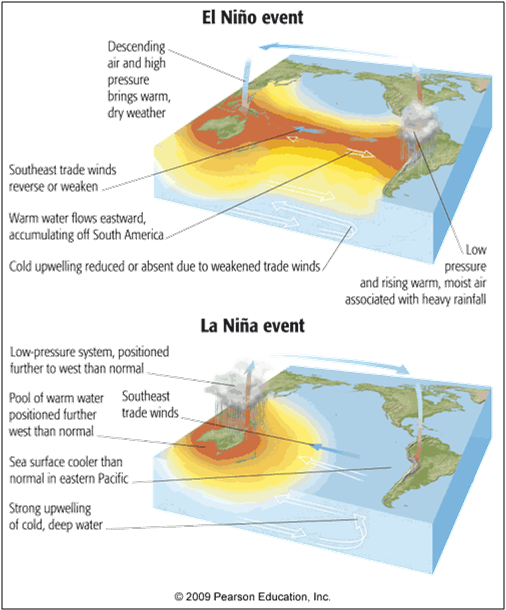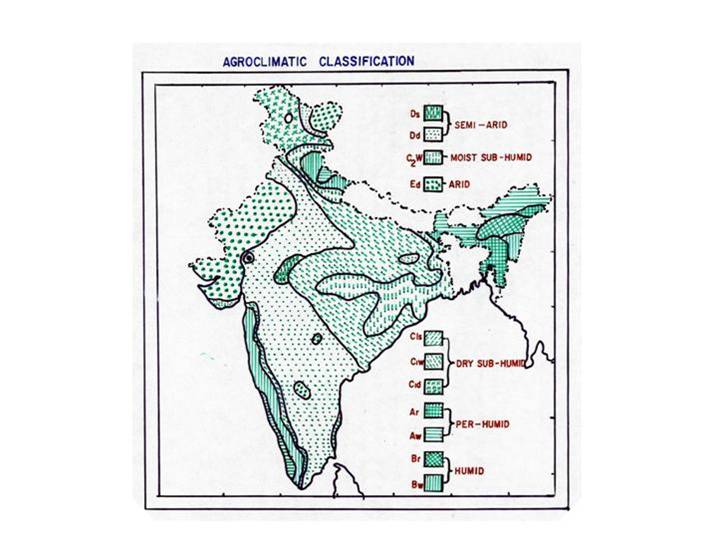Uncategorized
Geography TLP: Day 14 synopsis
3. What do you understand by an El Nino year? Also explain the mechanism of its occurrence. How does it affect the Indian subcontinent? (25 marks)
Directives: A very simple and direct question. It needed proper use of diagrams and examples. A good representative diagram for your reference:

Effects: Generally, El Nino and the Indian Monsoon rains are inversely related. Trade winds coming from South America normally blow westward towards Asia during Southwest Monsoon. Warming of the Pacific Ocean results in weakening of these winds. Therefore, moisture and heat content gets limited and results in reduction and uneven distribution of rainfall across the Indian sub-continent.
Does El Nino always lead to droughts in India?
All El Nino years do not lead to drought in India. The year 1997-98 is a stark
reminder as it was a strong El Nino year but that did not cause drought in India, in fact, rainfall was in excess. On the other hand, a moderate El Nino in 2002 resulted in one of the worst droughts.
Going by historical data, about 90% of all evolving El Nino years have led to below normal rainfall and 65% of evolving El Nino years have brought droughts. t is thus clear that El Nino years adversely affect the weather in India in terms of Monsoon rain, with very few exceptions. During an El Nino year, the rainfall is generally below the normal average, which has its negative bearing on crop production.
4. Recently, there have been substantial developments in the field of monsoon prediction in India. Discuss these developments and also enumerate the variables that are taken into account for predicting the monsoons. (25 marks)
Directives: This question was asked directly from the following source:
5. Divide India into climatic regions following the classification technique of Thornthwaite. Also represent the regions on an outline map of India. (15 marks)
Directives: Do not and we repeat do not waste your time in reading these concepts as the cost benefit ratio of these topics is not rewarding with examination points of view. Just go through the basics and be prepared to write few lines if asked in compulsory questions. Our aim of posting this questions was to tell you this important mantra. Nevertheless, we present you a redundant map for this redundant question:

Geography TLP: Day 15 synopsis
3. Explain the concept of drought. What are its different types? On an outline map of India, show the drought affected regions. Enumerate various drought proofing strategies. (25 marks)
Directives: Go through these comprehensive articles on droughts:
4. In an urban area, the precipitation pattern varies greatly from that of rural areas. Why? Also explain the phenomena of fog and photochemical smog in an urban area. (15 marks)
Directives: Go through this comprehensive article, beyond which you hardly need anything:
5. Write a note on the applications of climatology. (15 marks)
Directives: In questions like these, you have to apply all that you have read in the syllabus. You won’t find too many resources for such issues. What you need to do is to integrate the concepts learnt in climatology and examine its applications in other parts of the syllabus that include:
- Drought and flood proofing
- Urban planning
- GIS
- Agriculture
- Industries
- Resources
- Transportation
- Tourism
- Protection of biodiversity
- Ecological balance and sustainable development etc













